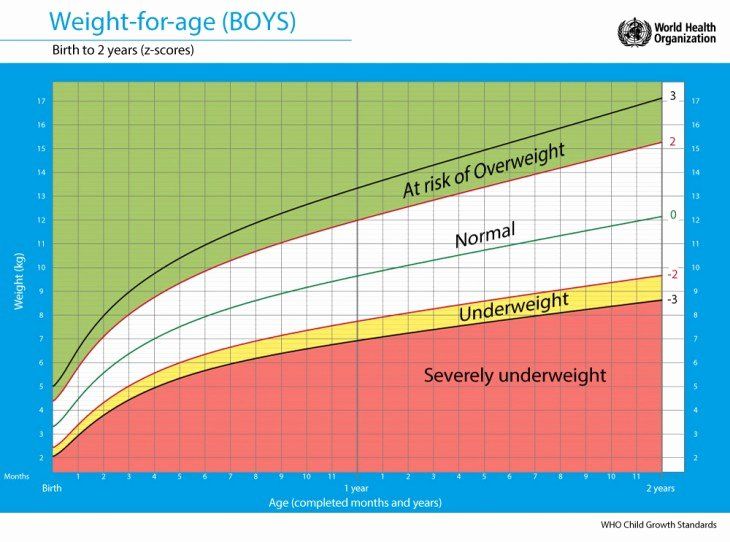How to help a child with sensory overload
Tips For Helping Sensory Sensitive Children
Back to Articles
06-4-19 - News & Press Releases, Pediatrics
This content was updated for accuracy and relevance on 02/01/22Anyone can struggle with sensory overload, including adults, but it’s more common among sensory sensitive children with autism, ADHD, or other behavioral issues.
What is Sensory Overload?
So, what is sensory overload exactly? For example, one of the most common sensory symptoms is when an autistic child is having a tough time managing their emotions, stimulus, and sensory experience due to abnormal sensory processing difficulties and hypersensitivity to environmental stimuli. Individuals with Austism or those who have other behavioral issues may often struggle in new environments or a sensory stimulus and have tantrums and meltdowns. It’s not because they want to garner attention, but because they are overwhelmed by their own emotions and have unusually sensitive sensory systems. Having a sensory issue that can lead to a sensory meltdown can be hard as a young person with an autism spectrum disorder. It is important to understand how they act when experiencing sensory overstimulation so they can manage their symptoms.
Sensory Sensitive Children and Autism
Sensory overload anxiety can happen to children who are just extra sensitive to overstimulation or on the spectrum. Even high-functioning and well-adjusted children are prone to the occasional meltdown due to sensory sensitivity. Their brains are still developing and learning how to respond to different sensory stimulation and sensory information. For autistic children, sensory stimuli like extreme odors, loud noise, fluorescent lights, learning to share and play, unfamiliar surroundings, and any change in daily routine can be sensory overload triggers and lead to tantrums and outbursts. Auditory overload and auditory sensory hypersensitivity are not uncommon for autistic children especially when put in a sensory integration environment that is new, has sensory dysregulation, or even new social interaction. These sensory overload triggers can lead to a variety of symptoms for someone with an autism spectrum disorder.
These sensory overload triggers can lead to a variety of symptoms for someone with an autism spectrum disorder.
They act out in response to sensory signals as well as physical or emotional stress. Outbursts are their way of expressing feelings of agitation, frustration, sensitivity, fear, anxiety, or whatever they perceive as a sensory assault. As a parent, it can be hard to know what to do with a child that has sensory processing issues. Unexpected meltdowns and fits of rage make it hard for children to make friends, succeed at school or team activities, or even leave the house. However, once you learn to recognize your child’s sensory triggers, you can help them learn to better regulate their responses. Occupational, speech, and Applied Behavioral Analysis therapies can help autistic children better manage overwhelming sensory issues and reduce meltdowns.
How to Manage Sensory Sensitivity in Children
Understanding sensory challenges and triggers to the sensory system is the first step in helping an autistic child reduce outbursts and feel comfortable in their environment. Whether an autistic person has auditory sensitivity, visual processing issues, or both, it is important to understand how to manage the specific challenge. It also can help a person with autism learn to handle and respond to sensory challenges and social situations in a more positive way.
Whether an autistic person has auditory sensitivity, visual processing issues, or both, it is important to understand how to manage the specific challenge. It also can help a person with autism learn to handle and respond to sensory challenges and social situations in a more positive way.
Teaching your child how to manage his or her own feelings and reactions in a heightened sensory experience is one of the best ways to prevent a meltdown due to sensory processing difficulties before it starts:
- Look for signs of distress before your child has a “meltdown” or becomes very upset. Do you notice regular sensory triggers? Encourage your child to communicate what is causing feelings of frustration, anger or agitation. If it’s easy to do so, address those concerns. Close a door, turn off lights and background noise, put a crying baby to sleep, etc.
- Teach age-appropriate meditation and self-calming techniques. Deep breathing, yoga, and mindfulness help people of all ages manage stress, sensory overload, and anxiety disorders by calming the sympathetic nervous system, lowering blood pressure, and reducing reactiveness to stimuli.
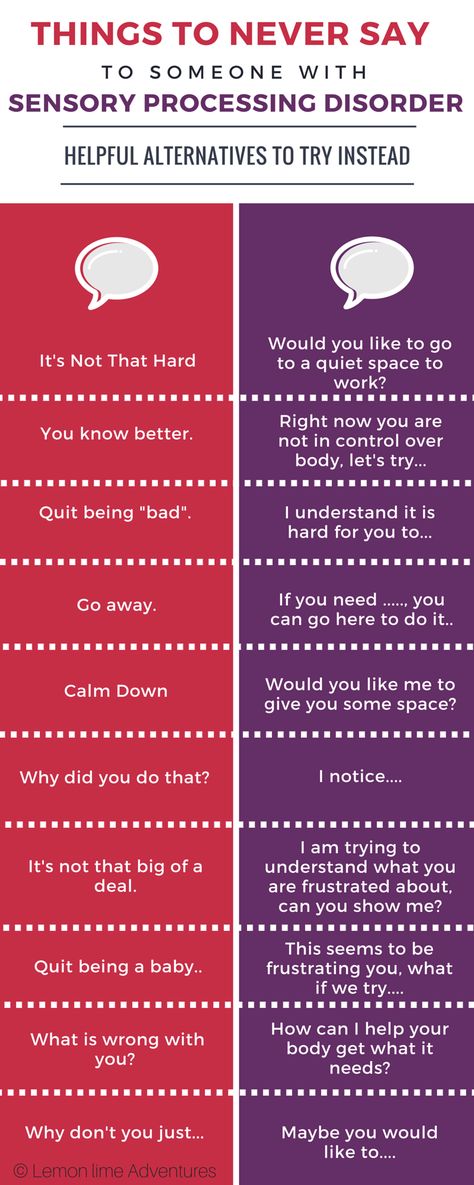
- Suggest simple methods for staying calm. Some tips include counting to ten, walking away, listening to music, or watching a calming video or reading a book.
- Develop an exit strategy in the event of sensory overload. Talk to your child about ways he or she can stay calm or change environments if they start to feel overwhelmed. Would it help to take a nap, go outside and play, retreat to a quiet room or leave the party?
- Give your child sensory toys, such as squeezy balls or buzzers, or make sure they always have their favorite blanket or stuffed animal. This can help create a sense of calm and security.
- Make time for physical exercise. Children with autism often spend several afternoons in therapy. Exercise helps burn off pent up energy, relieve stress, and regulate sleep. Take it outdoors for a dose of nature therapy.
- Buy an outdoor playset, swing or trampoline.
 Not only will it get your child outside and moving, but it provides the sensory input they need to self-regulate.
Not only will it get your child outside and moving, but it provides the sensory input they need to self-regulate. - Have them wear a weighted vest or wrap up in a blanket. These heavy items can provide a feeling of security.
- Add a pet to your family. Something as simple as petting a dog or cat can provide a positive sensory input and have a calming effect on children with autism. Caring for a pet also teaches them responsibility and routine, and gives them a loyal companion to walk and play with. Service or emotional support dogs are trained to help autistic children manage emotions.
While it’s good to have a bag of tricks to use at home and in social situations, parenting a sensory sensitive child with autism takes patience and healthy coping strategies. It can be hard to stay calm and remember that an autistic person isn’t throwing a fit just to be difficult or cause a scene in public. They are hypersensitive and need support and age-appropriate tools to deal with sensory processing issues and upsetting situations.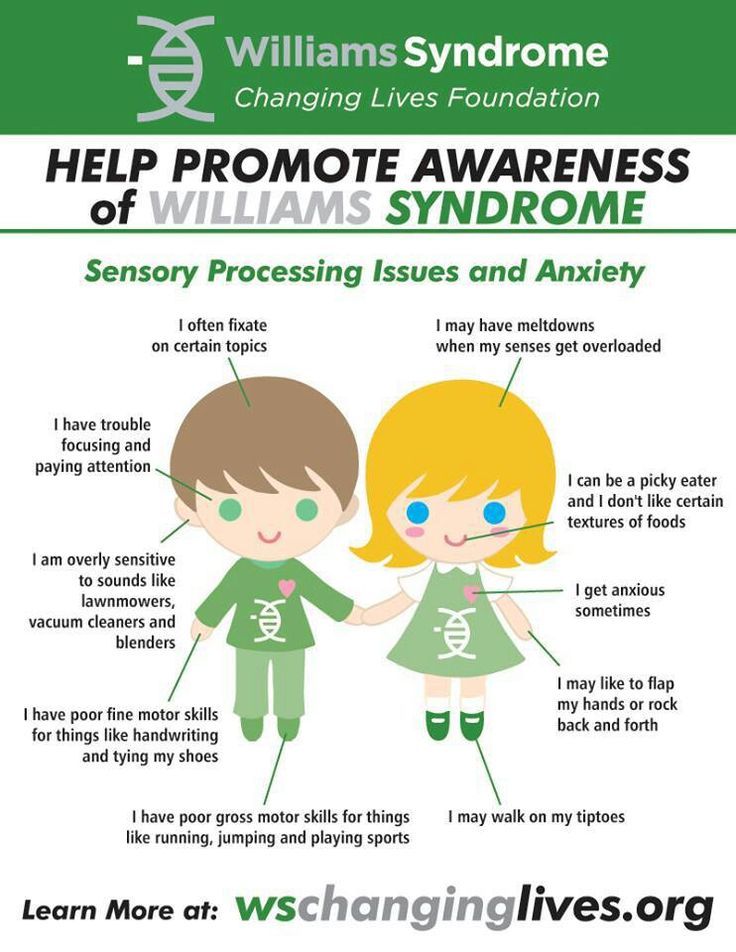
We Are Here to Help
If you’re feeling overwhelmed, don’t go it alone. Ivy Rehab’s Occupational Therapy and Applied Behavior Analysis (ABA) therapy offers specialized and individualized treatment for sensory sensitive children with autism and other developmental disabilities. Ivy’s caring and knowledgeable therapists provide emotional and practical support to both you and your child. By helping your child learn a variety of calming behaviors, you can make life more joyful and less stressful for yourself, your child and the entire family.
Article by:
Holly Lookabaugh-Deur, PT, DSc, GCS, CEEAAIvy Rehab
Holly is a practicing physical therapist, partner and Director of Clinical Services at Ivy Rehab Network with more than 40 years of experience in sports management with young athletes, and is board certified as a geriatric clinical specialist and certified exercise expert for aging adults. Deuer is certified as an aquatic and oncology rehabilitation specialist and serves as adjunct faculty at Central Michigan University and Grand Valley State University.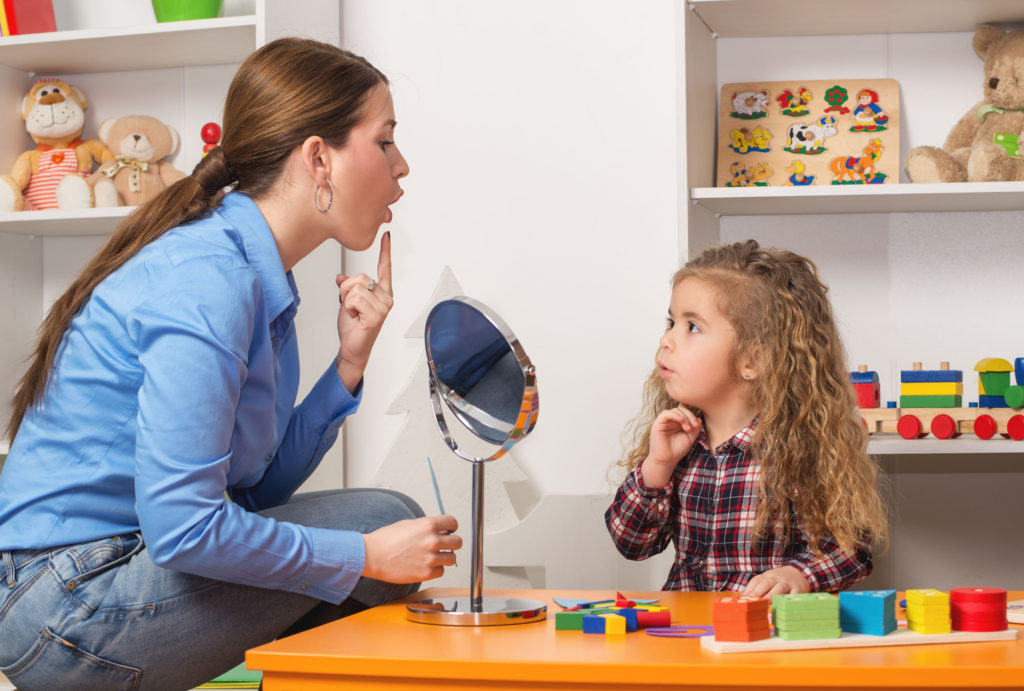
We’re Here for You
The medical information contained herein is provided as an information resource only, and does not substitute professional medical advice or consultation with healthcare professionals. This information is not intended to be patient education, does not create any patient-provider relationship, and should not be used as a substitute for professional diagnosis, treatment or medical advice. Please consult with your healthcare provider before making any healthcare decisions or for guidance about a specific medical condition. If you think you have a medical emergency, call your doctor or 911 immediately. IvyRehab Network, Inc. disclaims any and all responsibility, and shall have no liability, for any damages, loss, injury or liability whatsoever suffered as a result of your reliance on the information contained herein.
Share this article!
Back to Articles
Find a location that offers Applied Behavior Analysis Therapy (ABA) near you
All locations that offers Applied Behavior Analysis Therapy (ABA)
Relevant Conditions & Treatments
How to Help a Child with Sensory Processing Disorder and ADHD
All children thrive in environments engineered for their specific needs. This principle applies especially to children with attention deficit hyperactivity disorder (ADHD), and even more so when it is accompanied by sensory processing disorder (SPD), a neurological condition characterized by challenges with stimuli and the senses.
A child with SPD has trouble interpreting and managing sensations delivered by the environment and his or her own body. Different children experience SPD in different ways — some may be easily overwhelmed by sensations while others are under-responsive to them; some may experience sensory discrimination and perception problems while others have sensory-motor challenges.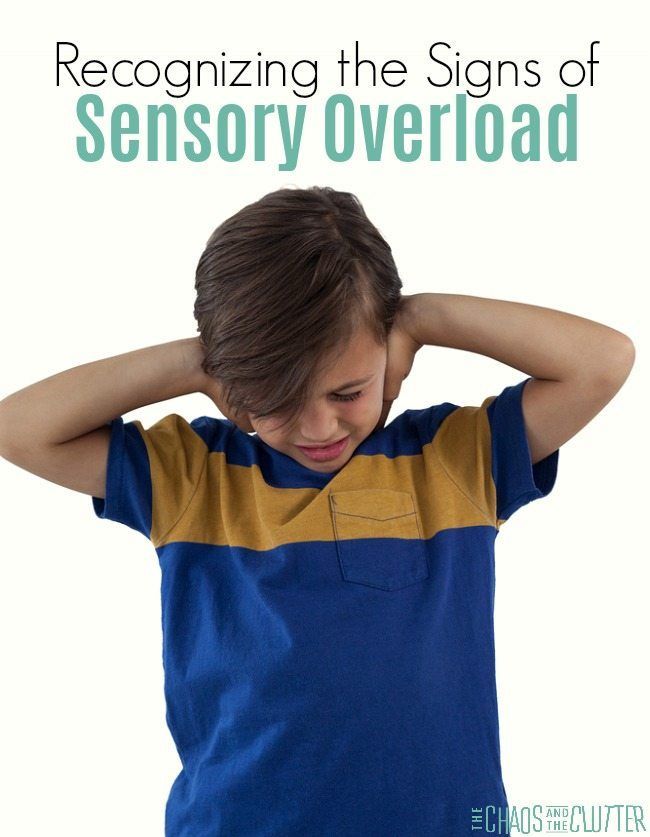
ADHD and SPD influence one another in no small way. A bothersome tag in a child’s shirt, or the classroom lighting, could contribute significantly to inattention and difficulties with concentration. A food sensitivity or a vision problem could heighten a child’s impulsivity.
How to Help a Child with Sensory Processing Disorder
Parents of children with ADHD and SPD should keep in mind these “3 Rs:”
RECOGNIZE that a sensory issue may underlie your child’s disorganization, inattention, hyperactivity, or impulsivity. Put on imaginary “sensory goggles” and ask:
- What sensations does my child avoid? Some common ones include unexpected touch or movement, t-shirt tags, lumpy mashed potatoes, sirens, and buzzing lights
- What sensations does my child actively seek? (Swinging? Jumping? Fidgeting? Chewing gum?)
- What sensations calm and organize my child? (Jogging? Hugging? Time in the tub or tight spaces?
[Think Your Child Has Sensory Processing Disorder? Take This Symptoms Test]
RECHANNEL the child’s fidgets. Instead of trying to squelch the child’s energy, find a way to help him or her use that vigor in a purposeful way.
Instead of trying to squelch the child’s energy, find a way to help him or her use that vigor in a purposeful way.
REWARD the child with specific and positive words. Praise effort and persistence.
Creating Sensory-Smart Environments for Children
Fixing a child’s physical environment with a focus on the senses can create a world of a difference for their comfort. Parents can begin with these basic steps.
Visual Sensitivities
- Eliminate fluorescent lights
- Reduce visual distractions by eliminating clutter
- Simplify work areas
- For homework and other worksheets, increase the type size
- Ask a doctor to check for visual processing issues. Use the College of Optometrists in Vision Development’s website (COVD.org) to find a developmental optometrist in your area
[Click to Read: 3 Types of Sensory Disorders That Look Like ADHD]
Auditory Sensitivities
- Ask a doctor to check for hyperacusis — increased sensitivity to sound frequencies and ranges
- Try earmuffs and/or noise cancelling headphones briefly — we don’t want the child’s brain to recalibrate so that normal noises become even more unbearable
Drown out distracting external noises with sounds that are acceptable to the child (mynoise. net is great for this)
net is great for this) - Consider speaking to an occupational therapist about a therapeutic listening program to help exercise the ears and strengthen tolerance
Tactile Sensitivities
- Focus on tactile desensitization work for hypersensitive children. Give the child hand fidgets (can help tons with focus) and heavy objects
- Buy seamless socks and tagless clothes
- Keep chewing gum on hand
Easy and Fun Movement and Sensory Break Ideas
The brain-and-body activities listed below also work to engage the child, build tolerance to problem sensations and sensitivities in healthy ways, and improve physical skills, concentration, and mental development.
- Jump rope
- Set up mini obstacle courses at home (jump over boxes, hula hoop, crawl)
- Set up “crash pads” — cushions on the floor so kids can jump and fall
- Bounce on a therapy or Hopper ball (#CommissionsEarned)
- Use a Goliath Zoomball (#CommissionsEarned)— a ball that travels back and forth on two handles when the player separates their arms
- Hopscotch
- Stretches: arm circles, back stretches
- Resistive/deep-pressure activities: Running to the wall and pressing up or against it or “holding it up” or using stretchy resistance bands to wrap around the body and make shapes
Children can also work on sensory challenges by doing chores and other activities around the house. It’s an easy way to integrate sensory activities into daily life while helping them build essential life skills. Some examples include:
It’s an easy way to integrate sensory activities into daily life while helping them build essential life skills. Some examples include:
- Cooking: Have the child wear disposable gloves to roll dough or mold cookies. That way, if tactile issues make it uncomfortable for them to touch things, they can get sensory input without messing with the receptors on their hands.
- “Heavy” lifting: Children with SPD tend to have low muscle tone; activities that require somewhat heavy lifting are best to work on this. Hauling mulch as part of yard work is a great activity, as is carrying the groceries or food delivery inside.
And remember that a child should not have to earn sensory breaks. The day that they need them the most is the day they are least likely to “earn” them.
Resources:
- The Sensory Strategies That Help My Child with Sensory Processing Disorder
- The Best Hair Detangler for Children and Adults With Sensory Issues?
- When a Sensory Sensitivity Throws Your Child Out of Sync
The information in this article was sourced in part from “Sensory-Smart Strategies for Children with Sensory Processing Disorder and ADHD” ADDitude webinar with Carol Stock Kranowitz and Lindsey Biel, which aired on May 7, 2020.
SUPPORT ADDITUDE
Thank you for reading ADDitude. To support our mission of providing ADHD education and support, please consider subscribing. Your readership and support help make our journalism possible.
#CommissionsEarned As an Amazon Associate, ADDitude earns a commission from qualifying purchases made by ADDitude readers on the affiliate links we share. However, all products linked in the ADDitude Store have been independently selected by our editors and/or recommended by our readers. Prices are accurate and items in stock as of time of publication
Previous Article Next Article
How to help with sensory overload?
tags:
sensory features,
symptoms and manifestations
Filed under:
Symptoms, manifestations and problems an acute state is a state of sensory overload. People without dysfunctions can also sometimes experience sensory overload, especially if they are sensitive. Overload occurs when they experience too much sensory stimulation, especially the kind they don't do well with. Think of it as something like a computer trying to process too much data at once. Here is how to help a person who is overwhelmed:
People without dysfunctions can also sometimes experience sensory overload, especially if they are sensitive. Overload occurs when they experience too much sensory stimulation, especially the kind they don't do well with. Think of it as something like a computer trying to process too much data at once. Here is how to help a person who is overwhelmed:
Steps
- Recognize the onset of an overload. Overload can manifest itself differently in different people. They may appear to be having a panic attack, agitated, passed out, or hysterical. If you know that a person has dysfunction associated with sensory information processing, then it would be more accurate to assume that this is an overload, and not some deliberate wildness in behavior or a manifestation of anxiety. If there is an impression of a loss of abilities that a person usually has, for example, loss of speech, then this is often a signal of severe overload. If you know the person well, it's easier for you to pick up on overload because you learn specific signs of it from that person.
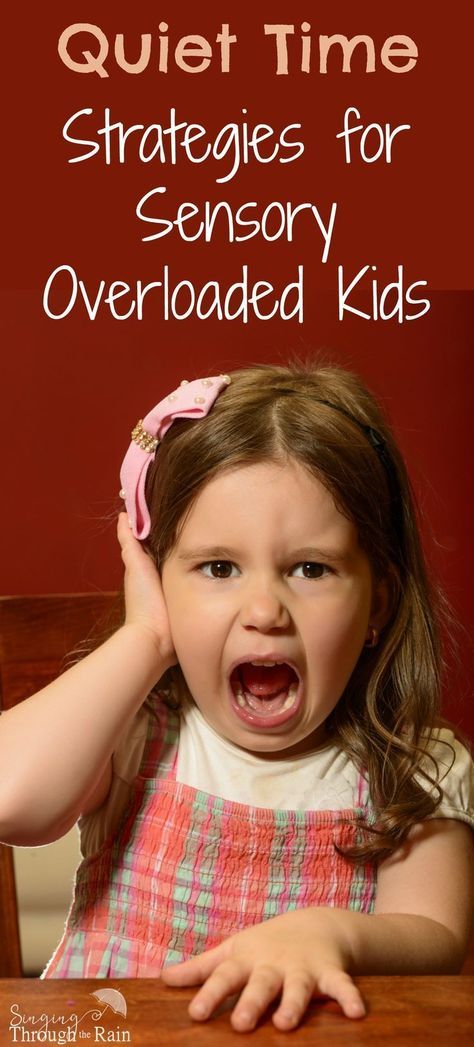 For example, many autistic people use different "stims" (repetitive motor movements) when overwhelmed than they would at other times (for example, rocking when they're happy and shaking their arms when they're overloaded), but these are different for each person.
For example, many autistic people use different "stims" (repetitive motor movements) when overwhelmed than they would at other times (for example, rocking when they're happy and shaking their arms when they're overloaded), but these are different for each person. - Reduce the noise level. If you are in a noisy place, try to take the person somewhere quieter. Give him time to think about your questions and answers, as overload tends to slow them down. If you can control the noise level, for example by turning off the music, then do so.
- Do not touch or push the person. Many people with sensory perception problems are hypersensitive to touch, and being touched or thinking about being touched can exacerbate the overload. Also, don't tower over the person. If he is sitting or if it is a small child, get down to his level, and do not hover over him.
- Don't say more than necessary. Ask questions if needed to help, but don't try to say something soothing or talk about anything else.
 Speech is sensory input and can exacerbate overload. In addition, sensory overload in some cases can impair a person's speech skills, and words may require effort from him.
Speech is sensory input and can exacerbate overload. In addition, sensory overload in some cases can impair a person's speech skills, and words may require effort from him. - If a person has a jacket, he may want to put it on and put on a hood. This helps reduce stimulation and many people find the weight of the jacket soothing. If the jacket is out of reach, ask the person if they would like to bring it.
- Do not overreact to aggressiveness. Some people become physically or verbally aggressive when overloaded. Don't take it personally, they don't own their actions. Also, don't panic. It's very rare for people in overload to cause serious damage because they don't really want to hurt you, they just want to find a way out of the situation. Most often, physical aggression happens due to the fact that you are trying to touch a person, hold him or prevent him from leaving.
- When a person has calmed down, know that he is most likely tired and will be more susceptible to overload for a long time after that.
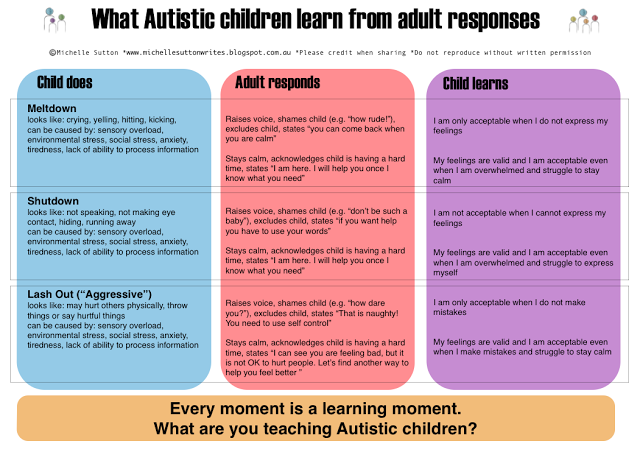 Full recovery from an episode of sensory overload may take hours or days. If you can, try to also reduce the post-overload stress.
Full recovery from an episode of sensory overload may take hours or days. If you can, try to also reduce the post-overload stress. - Listen to the person. He is aware of himself and his overloads. If he tells you that he needs to recover, pay attention. Different people have different strategies. If the person is trying to calm down with behavior that looks strange, such as rocking, staring at glowing objects, or other unusual activities, do not intervene unless these activities are dangerous. Sometimes well-intentioned people who are trying to help a person with autism or a sensory disability to meet the demands of society mistakenly interfere with useful mechanisms for coping with overload.
Tips
- Prevention is the best solution. If you are in regular contact with the person, find out what causes them to overload and avoid it. If avoidance is unavoidable, warn the person ahead of time and discuss how to deal with overload should it occur.
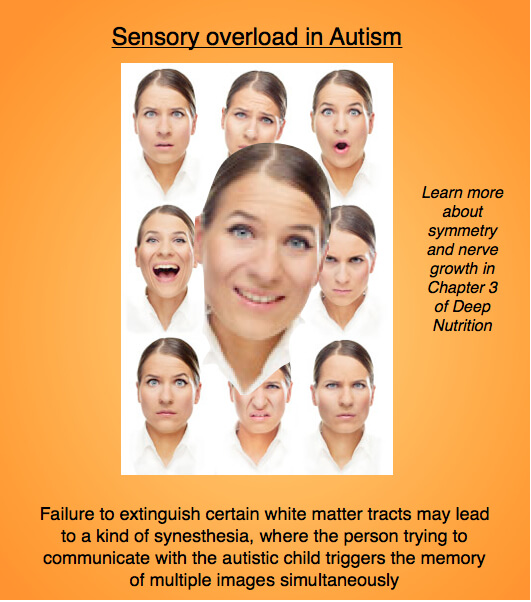
- Sensory overload does not necessarily involve any emotion. While someone may appear panicky or depressed when overwhelmed, the person can be extremely sensory overloaded without feeling any negative emotions. It is more of a cognitive state than an emotional state.
- Occupational Therapy can help reduce sensory sensitivity over time and thus reduce overload. It is best if the intervention starts as young as possible and is carried out by a therapist experienced in dealing with sensory issues.
Attention!
- If a person has never had a problem with sensory overload before and is not in a situation in which the average person would overload, they may have a stroke or other medical crisis. Be aware of the signs of a stroke.
- If a person starts to self-harm, you usually shouldn't try to stop them. Although the sight of a person hitting himself can be depressing, trying to grab him with your hands is likely to exacerbate the overload.
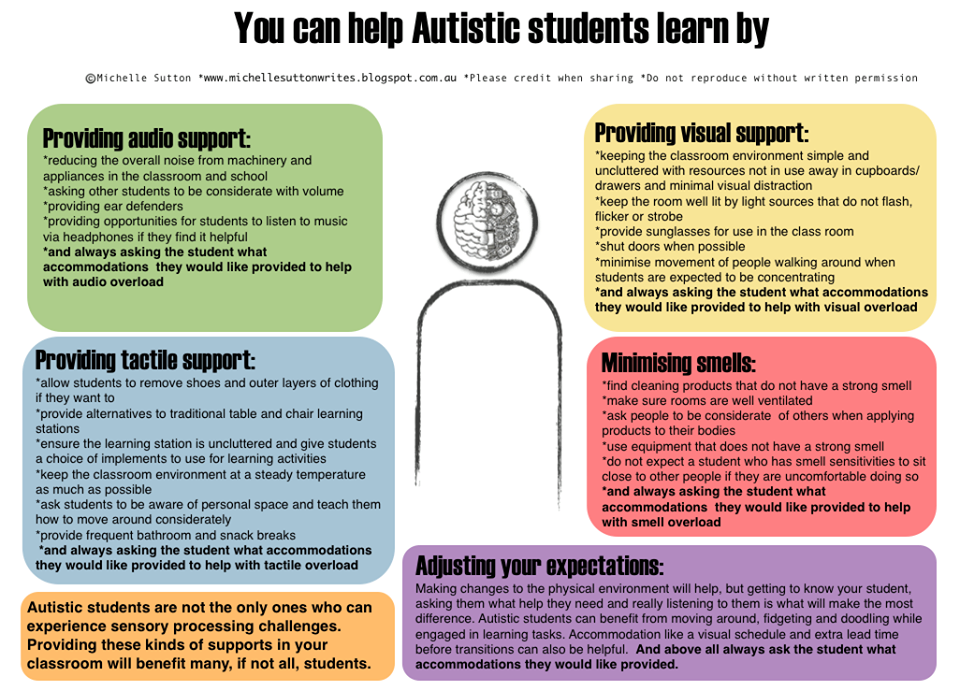 Intervene only if he is doing something that could cause serious injury, such as deep bites or head banging (risk of concussion or retinal detachment). It is better to deal with self-harm indirectly by reducing the overload.
Intervene only if he is doing something that could cause serious injury, such as deep bites or head banging (risk of concussion or retinal detachment). It is better to deal with self-harm indirectly by reducing the overload.
The above material is a translation of the text "How to Reduce Sensory Overload".
How to deal with sensory overload
//www.facebook.com/specialtranslations
Our VKontakte public: https://vk.com/public57544087
If you liked the material - help those who need help: http://specialtranslations.ru/need-help/
Copying the full text for distribution in social networks and forums is possible only by quoting publications from the official pages of Special Translations or through a link to the site. When quoting text on other sites, put the full translation heading at the beginning of the text.
Sensory overload is a frequent companion of a person suffering from sensory integration disorders, or other disorders that are usually accompanied by sensory processing disorders (including autism). Even if you don't have any significant developmental disabilities and are just very sensitive by nature, there is a risk of sensory overload. Overload occurs when a person is exposed to too much of a sensory stimulus and cannot handle it. This state can be compared to an overloaded computer system, trying to process more information than its RAM can accommodate. But helping someone with sensory overload isn't all that difficult. Below we will tell you in detail how to do this.
Even if you don't have any significant developmental disabilities and are just very sensitive by nature, there is a risk of sensory overload. Overload occurs when a person is exposed to too much of a sensory stimulus and cannot handle it. This state can be compared to an overloaded computer system, trying to process more information than its RAM can accommodate. But helping someone with sensory overload isn't all that difficult. Below we will tell you in detail how to do this.
Steps
1. Understand that the person is overwhelmed
Signs of sensory overload will vary from person to person. Someone will suddenly feel a panic attack, someone will become "hyperactive", someone will withdraw into himself, and someone will go into hysterics. If you know that a person has sensory integration disorders, it can be assumed that a sudden change in mood or an outburst of unwanted behavior may be due to sensory overload. If a person suddenly loses habitual skills, for example, stops talking and answering questions, this can be a signal of severe overload.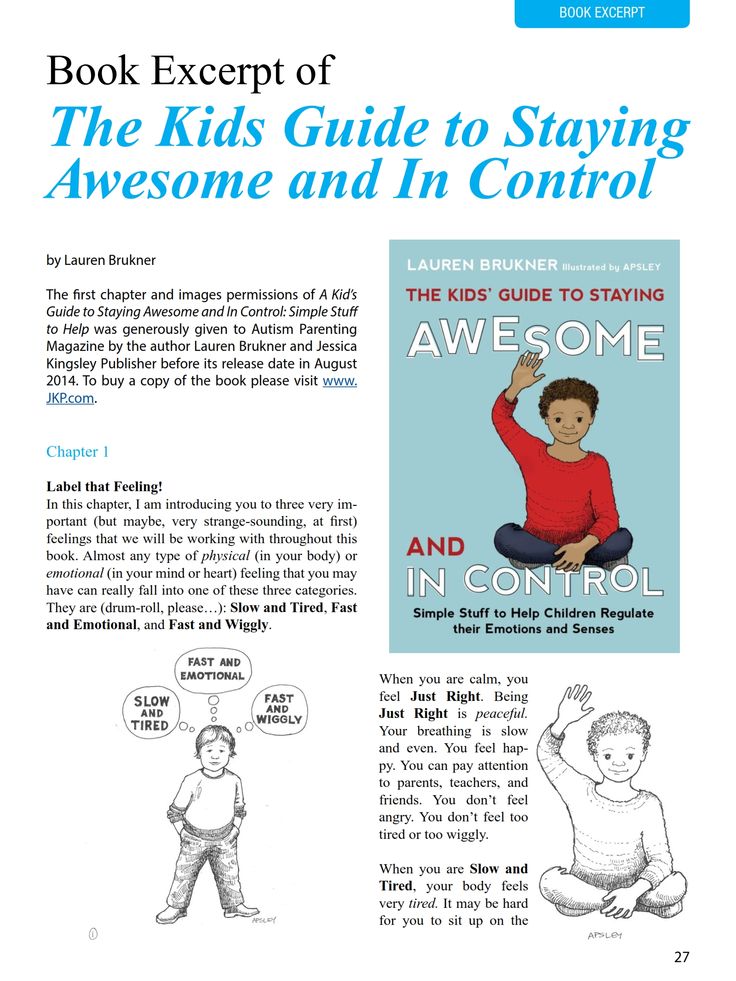 When a person is well known to you, it is easier to understand that he is overloaded, because. The signs of sensory overload will already be familiar to you. Many people with ASD have special “stimuli” or rituals during the moment of overload that are not characteristic of them when they are calm. For example, a person can sway when he feels good and is calm, and at the moment of overload, he suddenly begins to sharply clap his hands.
When a person is well known to you, it is easier to understand that he is overloaded, because. The signs of sensory overload will already be familiar to you. Many people with ASD have special “stimuli” or rituals during the moment of overload that are not characteristic of them when they are calm. For example, a person can sway when he feels good and is calm, and at the moment of overload, he suddenly begins to sharply clap his hands.
2. Help with the noise
If you are in a noisy place and you see that the person is overwhelmed, help him quickly move to a place where it is not so noisy. Sensory overload slows down information processing, so give the other person extra time to digest your question and formulate an answer. If you can reduce the noise level, such as turning down the volume of the music, by all means do so.
3. Do not touch the person once again. Don't push him
Many people with sensory integration disorders find it hard to be touched. Someone else's touch, even the thought that someone might touch them, can trigger overload. When a person is overloaded, he feels bad, do not "hang" over him. If he is sitting, or if you are dealing with a small child, get down to his level, sit down, kneel, but do not "hang".
4. Don't talk too much
If you need to know something in order to help someone, ask, but don't try to cheer them up, console them, or talk to them about an abstract topic. Speech is a powerful sensory stimulus and one can unwittingly increase the overload. In addition, in a state of overload, it may be difficult for a person to speak, and maintaining a conversation will require additional serious efforts from him.
5. If a person has a jacket with him, he may want to put it on and pull the hood over his forehead
A hood and a heavy jacket fabric on the shoulders will help to reduce the effect of sensory stimulation and calm down.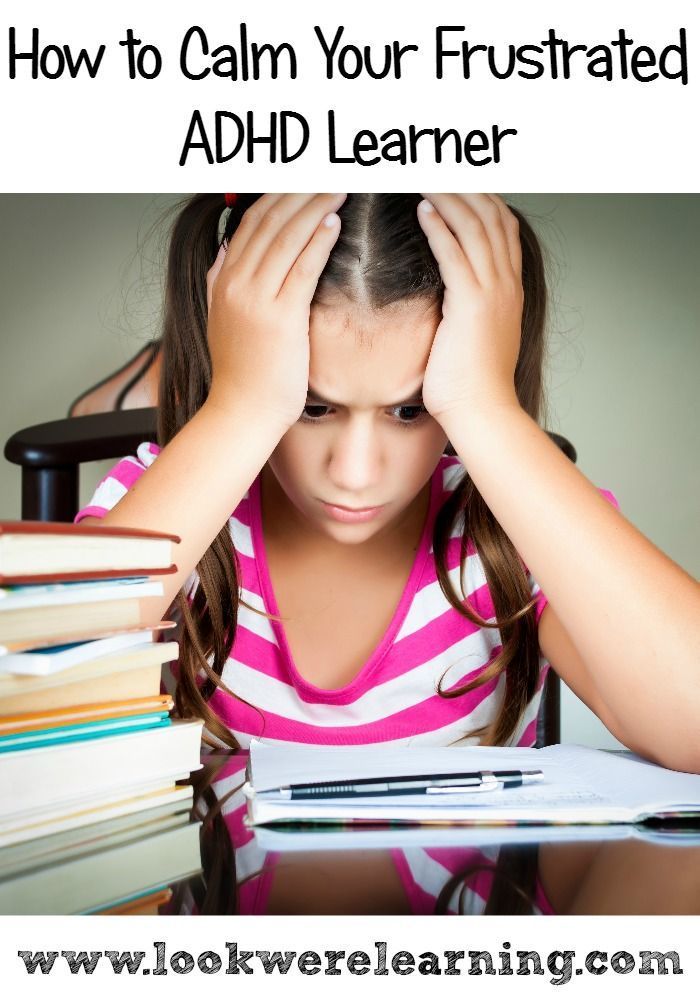 If the jacket is not at hand, you can offer to bring it. For those who do not have a jacket, you can offer to cover yourself with a heavy, thick blanket.
If the jacket is not at hand, you can offer to bring it. For those who do not have a jacket, you can offer to cover yourself with a heavy, thick blanket.
6. Don't respond to aggression
Some people may become physically or verbally aggressive when overwhelmed. Do not take it personally, at such a moment a person simply cannot control himself. And of course, don't panic. The main goal of the person experiencing overload is to leave the traumatic environment as soon as possible, and not to cause you serious harm at all. An outburst of aggression can be provoked by an attempt to touch him, calm him down, or prevent him from leaving.
7. When a person finally copes with overload, be prepared for the fact that for a long time he may feel very tired, and react more than usual to stimuli
This state can last from several hours to several days, until it fully recovers from the overload. If possible, try to protect the person from further stress during this period.







